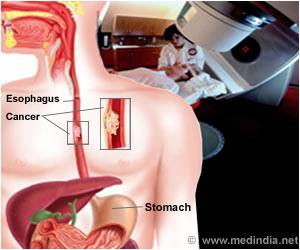A molecule that could fully reverse the devastating muscle loss that often accompanies advanced cancer in mice has been developed by scientists.

Instead of myostatin binding to its normal receptor and triggering muscle wastage, it is 'mopped up' by binding to the decoy molecule instead.
Muscle wasting - called cachexia - is thought to account for about 30 percent of deaths in patients with cancer, but how exactly cachexia is spurred by cancer - or indeed exactly how it leads to a patient's decline - isn't known.
It is thought that several molecular pathways work in tandem, "activating an axis of evil to control muscle mass in a negative way", said H. Q. Han, lead author of the study and scientific director of the metabolic disorders division at Amgen, a biotechnology company in Thousand Oaks, California.
The researchers wanted to find the dominant pathway responsible for cancer cachexia, and then design a way to block it in order to treat patients.
Several studies have shown that blocking the myostatin pathway can promote muscle growth, said Han, and some have shown that a molecule closely related to myostatin, called activin A, becomes more abundant in patients with some cancers.
Advertisement
The researchers created a soluble version of the activin A receptor - which is thought to affect both myostatin and activin A signalling - by fusing a piece of human activin receptor to an antibody.
"There's really an overwhelming amount of data now showing the benefits of targeting this pathway," said Han.
A single injection of the soluble receptor into normal mice boosted their muscle mass by 25 percent or more in a week or two.
When it was given to mice implanted with colon cancer cells, their muscle mass returned to normal, even though their tumours continued to grow.
Strikingly, all of the animals that did not receive the soluble receptor were dead 40 days after cancer cells were implanted, but more than half of the treated animals survived to this point.
The study will be published in the journal Cell.
Source-ANI












